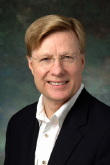Dec. 19, 2002 – Matrics, a Columbia, Maryland-based startup, has announced that it will begin marketing its RFID technology to companies looking to secure people, vehicles and high-value assets. The company says its passive tags have the range and flexibility to be a low-cost alternative to battery powered tags for some applications.
Since it entered the RFID market last year, Matrics has focused primarily on supply chain applications. The company sells an inexpensive UHF (902-928 MHz) tag that can be read from 10 to 20 feet, depending on the environment and application. John Shoemaker, Matrics’ VP of corporate development, says the company has been studying how its RFID technology can address security needs.
One big issue the government agencies and private companies have been grappling with is how to secure cargo in transit cost-effectively. The departments of Defense and Transportation recently announced a pilot using electronic seals (see US Tests Cargo Security System). Matrics has been exploring the feasibility of putting tags on goods inside containers and having a reader inside that communicates with a GPS transmitter. “With this system, you can monitor where the trailer is at all times, and know that all the items are on the trailer at all times,” says Shoemaker.
Another potential market is baggage handling. The Federal Aviation Administration has done studies that show RFID is ideal for tracking high-risk baggage. But airlines have balked at paying $1 or more for RFID inlays. Shoemaker says that high-volume purchases by companies using the RFID tags in the supply chain will drive down the cost for those interested in security applications. The cost of inlays could drop to 25 cents if the expected purchases by large companies materialize.
The low cost and the improved performance of the latest UHF tags mean they can be used for tracking high-risk baggage and items going into unit load devices (ULDs) on aircraft. It also means they can be used for vehicle identification and access control. So, for instance, a tag inside the windshield could be used to control access to a gated community or a government agency or military facility.
Shoemaker says that for some applications, Matrics’ passive UHF tags will complement active tags, and in other cases, it will be a low-cost alternative. The company will work with system integrators that know the specific markets. Shoemaker says Matrics’ RFID technology will be used in baggage handling applications being installed by Accu-Sort, an auto-identification systems provider in Telford, Penn., at Love Field in Dallas and Manchester Airport.
Despite the need and the interest in new security technologies, most vendors say sales have been disappointing. One reason is private companies have dramatically reduced their spending on technology. Another is confusion within the federal government about the role of the newly created Department of Homeland Security.
Shoemaker acknowledges that the government is still trying to get its arms around the enormous challenge it faces in securing airports, container ports, borders and even packages being mailed and sent by courier to the United States. “The public sector procurement process is brutal,” he says. “It takes a long time to go through the bidding process, which doesn’t lend itself to a war-time footing.”
But he is also optimistic because it is clear to many people in both the public and private sector that RFID has an important role to play in securing assets. Says Shoemaker: “The current third generation technology has come to the forefront at the time when the country needs it the most.”


